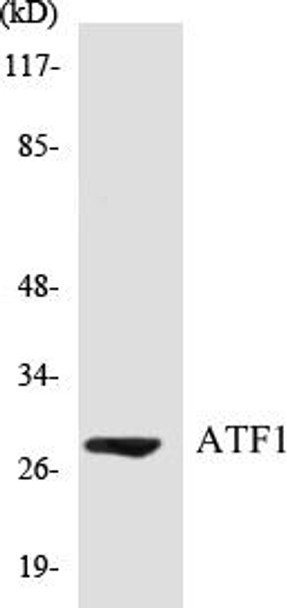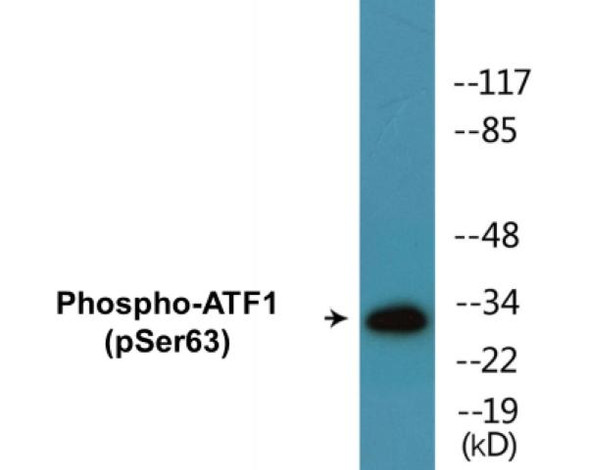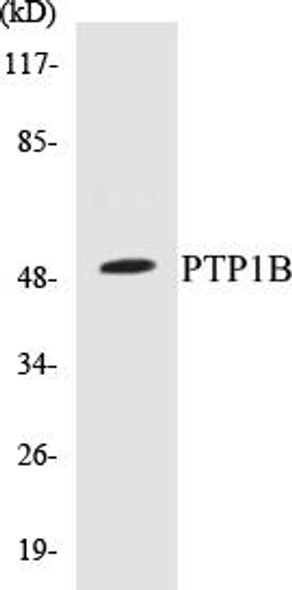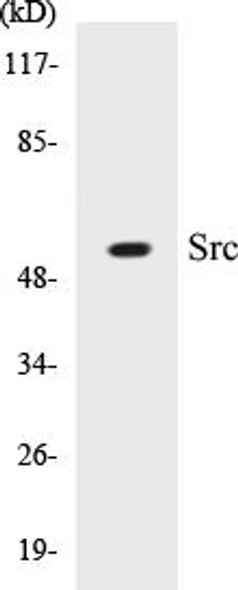Description
ATF1 Colorimetric Cell-Based ELISA Kit
The Human ATF1 Colorimetric Cell-Based ELISA Kit is specifically designed for the precise measurement of ATF1 levels in cell lysates, cell culture supernatants, and tissue homogenates. This kit offers exceptional sensitivity and accuracy, ensuring dependable and consistent results for various research applications.ATF1, also known as activating transcription factor 1, is a key factor in the regulation of gene expression and cell growth. It plays a crucial role in various cellular processes, including cell differentiation, apoptosis, and response to stress signals.
Dysregulation of ATF1 has been linked to cancer, diabetes, and other diseases, highlighting its importance as a potential therapeutic target and biomarker for disease progression.With its high performance and reliability, the Human ATF1 Colorimetric Cell-Based ELISA Kit is an invaluable tool for researchers studying the role of ATF1 in health and disease. Its user-friendly format and quick protocol make it suitable for use in both academic and industrial settings.
| Product Name: | ATF1 Colorimetric Cell-Based ELISA |
| Product Code: | CBCAB00534 |
| ELISA Type: | Cell-Based |
| Target: | ATF1 |
| Reactivity: | Human, Mouse, Rat |
| Dynamic Range: | > 5000 Cells |
| Detection Method: | Colorimetric 450 nmStorage/Stability:4°C/6 Months |
| Format: | 96-Well Microplate |
The ATF1 Colorimetric Cell-Based ELISA Kit is a convenient, lysate-free, high throughput and sensitive assay kit that can detect ATF1 protein expression profile in cells. The kit can be used for measuring the relative amounts of ATF1 in cultured cells as well as screening for the effects that various treatments, inhibitors (ie siRNA or chemicals), or activators have on ATF1.
Qualitative determination of ATF1 concentration is achieved by an indirect ELISA format. In essence, ATF1 is captured by ATF1-specific primary antibodies while the HRP-conjugated secondary antibodies bind the Fc region of the primary antibody. Through this binding, the HRP enzyme conjugated to the secondary antibody can catalyze a colorimetric reaction upon substrate addition. Due to the qualitative nature of the Cell-Based ELISA, multiple normalization methods are needed:
| 1. | A monoclonal antibody specific for human GAPDH is included to serve as an internal positive control in normalizing the target absorbance values. |
| 2. | Following the colorimetric measurement of HRP activity via substrate addition, the Crystal Violet whole-cell staining method may be used to determine cell density. After staining, the results can be analysed by normalizing the absorbance values to cell amounts, by which the plating difference can be adjusted. |
| Database Information: | Gene ID: 466, UniProt ID: P18846, OMIM: 123803/612160, Unigene: Hs.648565 |
| Gene Symbol: | ATF1 |
| Sub Type: | None |
| UniProt Protein Function: | ATF-1: a transcription factor that is a member of the leucine zipper family. Forms a homodimer or heterodimer with c-Jun and stimulates CRE-dependent transcription. Binds the Tax-responsive element (TRE) of HTLV-I. Activated downstream of IL-1. c-Src and TRAF6 are mediators of IL-1-induced AP-1 activation. Plays an important role in the trans-activation of the MHC class II trans-activator (CIITA) promoter III in B cells. |
| UniProt Protein Details: | Protein type:Transcription factor Chromosomal Location of Human Ortholog: 12q13 Cellular Component: nucleoplasm; nucleus Molecular Function:protein binding; protein complex binding; protein heterodimerization activity; RNA polymerase II transcription factor activity, enhancer binding; transcription factor activity Biological Process: cellular protein complex assembly; innate immune response; MyD88-dependent toll-like receptor signaling pathway; MyD88-independent toll-like receptor signaling pathway; nerve growth factor receptor signaling pathway; positive regulation of DNA replication; positive regulation of transcription from RNA polymerase II promoter; response to cobalt ion; response to organic cyclic substance; stress-activated MAPK cascade; toll-like receptor 10 signaling pathway; toll-like receptor 2 signaling pathway; toll-like receptor 3 signaling pathway; toll-like receptor 4 signaling pathway; toll-like receptor 5 signaling pathway; toll-like receptor 9 signaling pathway; toll-like receptor signaling pathway; transcription from RNA polymerase II promoter |
| NCBI Summary: | This gene encodes an activating transcription factor, which belongs to the ATF subfamily and bZIP (basic-region leucine zipper) family. It influences cellular physiologic processes by regulating the expression of downstream target genes, which are related to growth, survival, and other cellular activities. This protein is phosphorylated at serine 63 in its kinase-inducible domain by serine/threonine kinases, cAMP-dependent protein kinase A, calmodulin-dependent protein kinase I/II, mitogen- and stress-activated protein kinase and cyclin-dependent kinase 3 (cdk-3). Its phosphorylation enhances its transactivation and transcriptional activities, and enhances cell transformation. Fusion of this gene and FUS on chromosome 16 or EWSR1 on chromosome 22 induced by translocation generates chimeric proteins in angiomatoid fibrous histiocytoma and clear cell sarcoma. This gene has a pseudogene on chromosome 6. [provided by RefSeq, Aug 2010] |
| UniProt Code: | P18846 |
| NCBI GenInfo Identifier: | 1168542 |
| NCBI Gene ID: | 466 |
| NCBI Accession: | P18846.2 |
| UniProt Secondary Accession: | P18846,P25168, Q9H4A8, B4DRF9, |
| UniProt Related Accession: | P18846,AAB25878 |
| Molecular Weight: | 15,295 Da |
| NCBI Full Name: | Cyclic AMP-dependent transcription factor ATF-1 |
| NCBI Synonym Full Names: | activating transcription factor 1 |
| NCBI Official Symbol: | ATF1 |
| NCBI Official Synonym Symbols: | TREB36; EWS-ATF1; FUS/ATF-1 |
| NCBI Protein Information: | cyclic AMP-dependent transcription factor ATF-1 |
| UniProt Protein Name: | Cyclic AMP-dependent transcription factor ATF-1 |
| UniProt Synonym Protein Names: | Activating transcription factor 1; Protein TREB36 |
| Protein Family: | Alcohol O-acetyltransferase |
| UniProt Gene Name: | ATF1 |
| UniProt Entry Name: | ATF1_HUMAN |
| Component | Quantity |
| 96-Well Cell Culture Clear-Bottom Microplate | 2 plates |
| 10X TBS | 24 mL |
| Quenching Buffer | 24 mL |
| Blocking Buffer | 50 mL |
| 15X Wash Buffer | 50 mL |
| Primary Antibody Diluent | 12 mL |
| 100x Anti-Phospho Target Antibody | 60 µL |
| 100x Anti-Target Antibody | 60 µL |
| Anti-GAPDH Antibody | 60 µL |
| HRP-Conjugated Anti-Rabbit IgG Antibody | 12 mL |
| HRP-Conjugated Anti-Mouse IgG Antibody | 12 mL |
| SDS Solution | 12 mL |
| Stop Solution | 24 mL |
| Ready-to-Use Substrate | 12 mL |
| Crystal Violet Solution | 12 mL |
| Adhesive Plate Seals | 2 seals |
The following materials and/or equipment are NOT provided in this kit but are necessary to successfully conduct the experiment:
- Microplate reader able to measure absorbance at 450 nm and/or 595 nm for Crystal Violet Cell Staining (Optional)
- Micropipettes with capability of measuring volumes ranging from 1 µL to 1 ml
- 37% formaldehyde (Sigma Cat# F-8775) or formaldehyde from other sources
- Squirt bottle, manifold dispenser, multichannel pipette reservoir or automated microplate washer
- Graph paper or computer software capable of generating or displaying logarithmic functions
- Absorbent papers or vacuum aspirator
- Test tubes or microfuge tubes capable of storing ≥1 ml
- Poly-L-Lysine (Sigma Cat# P4832 for suspension cells)
- Orbital shaker (optional)
- Deionized or sterile water
*Note: Protocols are specific to each batch/lot. For the correct instructions please follow the protocol included in your kit.
| Step | Procedure |
| 1. | Seed 200 µL of 20,000 adherent cells in culture medium in each well of a 96-well plate. The plates included in the kit are sterile and treated for cell culture. For suspension cells and loosely attached cells, coat the plates with 100 µL of 10 µg/ml Poly-L-Lysine (not included) to each well of a 96-well plate for 30 minutes at 37°C prior to adding cells. |
| 2. | Incubate the cells for overnight at 37°C, 5% CO2. |
| 3. | Treat the cells as desired. |
| 4. | Remove the cell culture medium and rinse with 200 µL of 1x TBS, twice. |
| 5. | Fix the cells by incubating with 100 µL of Fixing Solution for 20 minutes at room temperature. The 4% formaldehyde is used for adherent cells and 8% formaldehyde is used for suspension cells and loosely attached cells. |
| 6. | Remove the Fixing Solution and wash the plate 3 times with 200 µL 1x Wash Buffer for five minutes each time with gentle shaking on the orbital shaker. The plate can be stored at 4°C for a week. |
| 7. | Add 100 µL of Quenching Buffer and incubate for 20 minutes at room temperature. |
| 8. | Wash the plate 3 times with 1x Wash Buffer for 5 minutes each time. |
| 9. | Add 200 µL of Blocking Buffer and incubate for 1 hour at room temperature. |
| 10. | Wash 3 times with 200 µL of 1x Wash Buffer for 5 minutes each time. |
| 11. | Add 50 µL of 1x primary antibodies (Anti-ATF1 Antibody and/or Anti-GAPDH Antibody) to the corresponding wells, cover with Parafilm and incubate for 16 hours (overnight) at 4°C. If the target expression is known to be high, incubate for 2 hours at room temperature. |
| 12. | Wash 3 times with 200 µL of 1x Wash Buffer for 5 minutes each time. |
| 13. | Add 50 µL of 1x secondary antibodies (HRP-Conjugated AntiRabbit IgG Antibody or HRP-Conjugated Anti-Mouse IgG Antibody) to corresponding wells and incubate for 1.5 hours at room temperature. |
| 14. | Wash 3 times with 200 µL of 1x Wash Buffer for 5 minutes each time. |
| 15. | Add 50 µL of Ready-to-Use Substrate to each well and incubate for 30 minutes at room temperature in the dark. |
| 16. | Add 50 µL of Stop Solution to each well and read OD at 450 nm immediately using the microplate reader. |
(Additional Crystal Violet staining may be performed if desired – details of this may be found in the kit technical manual.)






